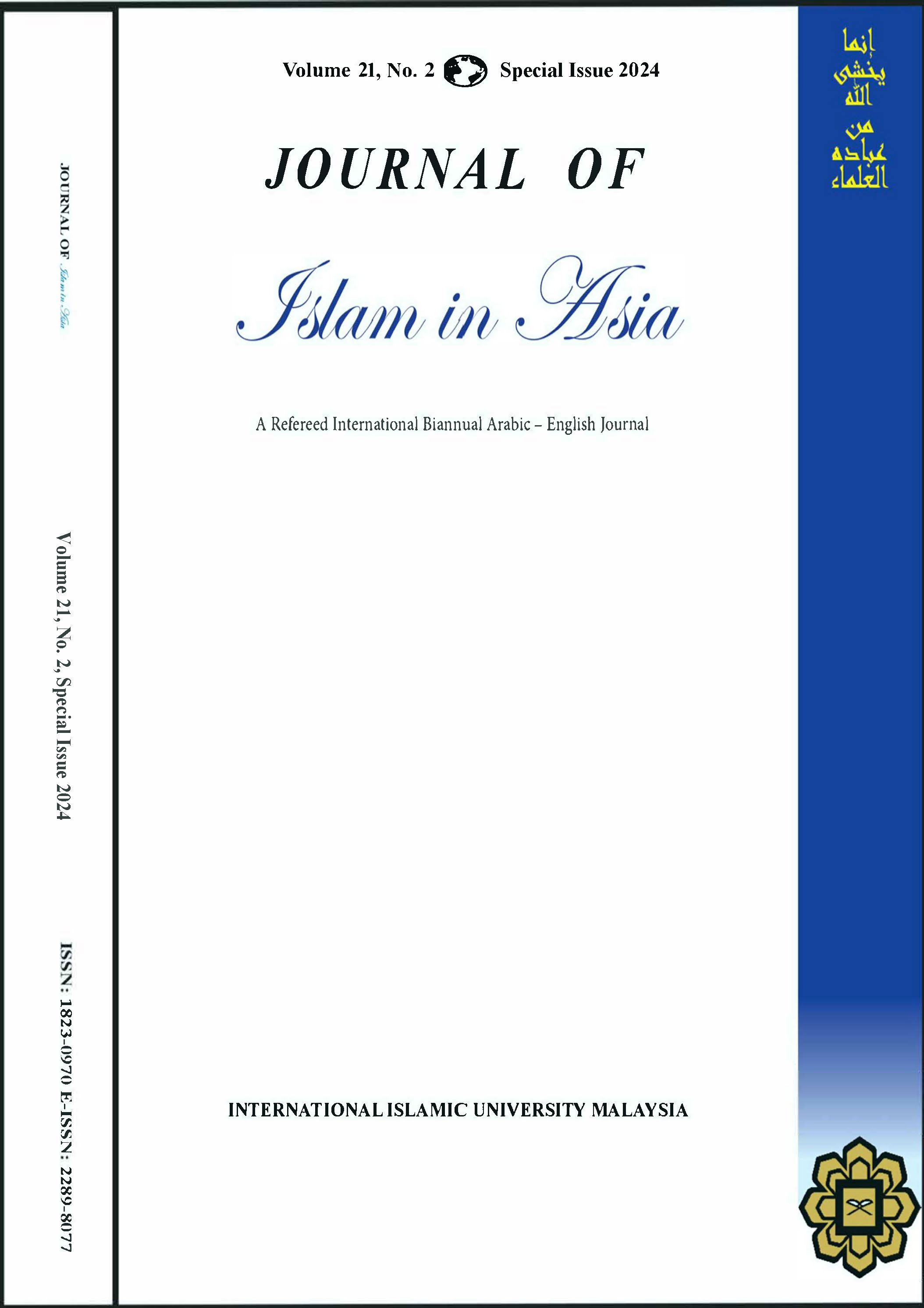Anders Breivik’s manifesto: Measuring Violence Indicator in Anti-Islamic Extremist Discourse
DOI:
https://doi.org/10.31436/jia.v21i2.1255Keywords:
Anders Breivik, Anti-Muslim Discourse, Jihad Score, Violence IndicatorAbstract
On July 22, 2011, Anders Breivik massacred 75 people in a bomb attack and mass shooting out of his hatred towards Islam and Muslims. His actions shocked Norway and the world. He left behind a manifesto ‘2083, A European Declaration of Independence’ which clearly indicates his imagination about Islam and Muslims and the reasons that led him to commit this mass murder. Breivik is studied extensively in the academia through the lenses of Islamophobia and terrorism; there are few studies done on the levels of violence in anti-Islamic discourse. This study uses Richard A. Nielsen’s methodology which measures numerically to which extent Muslim clerics support for violent jihad and ideology in their writings. Such algorithmic approaches that evaluate extremist Muslim discourse have been mainly applied in Western academia to show level of violence in it. This study is unique as the Nielsen’s approach is applied to anti-Islamic extremist discourse. It takes Breivik’s manifesto as a field of analysis. First, it takes as a baseline the five topics (along its exclusive and its frequent keywords) in Jihadi corpus calculated by Professor Nielsen. Second, main key-terms of Breivik’s anti-Islamic position are measured to see the level of violence according to Nielsen’s methodology. After this, both key terms are compared. Results show that Breivik’s anti-Islamic position contains more violence indicator than the jihadist position. This research will be the first to apply algorithmic approach and it will demonstrate that using extremism measure tools developed by the Western academic can be applied to anti-Islamic extremist discourse. In conclusion, if extremism measure tools are applied fairly on both Islamist thought and anti-Islamic discourse, it will not only show that both streams of discourse contain levels of violence, but anti-Muslim discourse accommodates higher levels of violence as well. This research will open the way for Muslim academics to apply algorithmic methods to counter anti-Islamic discourse.
References
Andre, V. “Merah and Breivik: A Reflection of the European Identity Crisis.” Islam and Christian–Muslim Relations 26, no. 2 (2015): 183–204.
Berntzen, L. E., & Sandberg, S. “The Collective Nature of Lone Wolf Terrorism: Anders Behring Breivik and the Anti-Islamic Social Movement.” Terrorism and Political Violence 26, no. 5 (2014): 759–779.
Brevik, Anders. 2083, A European Declaration of Independence. London: 2011.
Chang, Ruth. “The Possibility of Parity.” Ethics 112, no. 4 (2002): 659-688.
Cohen, K., Johansson, F., Kaati, L., & Mork, J. C.” Detecting Linguistic Markers for Radical Violence in Social Media.” Terrorism and Political Violence, 26, no. 1 (2013): 246–256.
Ding F., Ge Q., Jiang D., Fu J., Hao M. “Understanding the dynamics of terrorism events with multiple-discipline datasets and machine learning approach.” PLoS ONE 12, no. 6 (2017): 1-11.
Djupe, Paul. “Review of Deadly Clerics, by R. Nielsen.” Politics and Religion 12, no. 1 (2018): 205-208.
Fahy, Tony. “Do cases like that of Anders Breivik show that fanaticism is a form of madness? No.” BJM 345 (2012): 1-2.
Freedman, M. “Fighting from the Pulpit: Religious Leaders and Violent Conflict in Israel.” Journal of Conflict Resolution 63, no. 10 (2019): 2262-2288.
Gardell, M. “Crusader Dreams: Oslo 22/7, Islamophobia, and the Quest for a Monocultural Europe.” Terrorism and Political Violence 26, no.1 (2013): 129–155.
Gilmour, J., & J., Stephenson. Hitler’s Scandinavian Legacy. London: Blomsburry, 2013.
Grimmer, J., Roberts, M., Stewart, B. Text as Data, A New Framework for Machine Learning and the Social Sciences. USA: Princeton University Press, 2022.
Hafez, Mohammed. “Review of Deadly Clerics, by R. Nielsen.” Perspectives in Politics 16, no. 4 (2018): 1222-1224.
Hemmingby, Cato, and Tore Bjorgo. The Dynamics of a Terrorist Targueting Process. England: Palgrave Macmillan, 2016.
Melle, Ingrid. “The Breivik case and what psychiatrists can learn from it.” World Psychiatry 12, no. 1 (2013): 16–21.
Nielsen, Kai. “Belief, Unbelief, and the Parity Reasoning.” Sophia 27, no. 3 (1988): 1-12.
Nielsen, R. A. Deadly Clerics, Blocked Ambition and the Paths to Jihad. Cambridge: Cambridge University Press, 2017.
Python, Andre. Debunking Seven Terrorism Myths Using Statistics. London: CRC Press, Taylor & Francis, 2020.
Richards, Barry. “What Drove Anders Breivik?.” Contexts 13, no. 4 (2014): 42-47.
Russell, G.W. The Interpreters. United Kingdom: Macmillan, 1923.
Salomonsen, Jone. “Towards a New 1933? The Fascist Labor of the Extreme and Radical right.” Dialogue 60, no. 2 (2021): 220-227.
Sandberg, Sveinung. “Are self-narratives strategic or determined, unified or fragmented? Reading Breivik’s Manifesto in light of narrative criminology.” Acta Sociologica 56, no. 1 (2013): 69-83.
Scheuer, Michael. Osama bin Laden. New York: Oxford University Press: 2011.
Shaffer, R. “Jihad and Counter-Jihad in Europe: Islamic Radicals, Right-Wing Extremists, and Counter-Terrorism Responses.” Terrorism and Political Violence 28, no. 2 (2016): 383–394.
Shorten, Richard. The Ideology of Political Reactionaries. New York: Routledge, 2022.
Strømmen, H. “Christian Terror in Europe? The Bible in Anders Behring Breivik’s Manifesto.” Journal of the Bible and its Reception 4, no. (2017): 147-169.
Strømmen, H. “Crusades, Christ, and Christmas, Islamophobia and the Bible in the European Far-Right after 9/11.” Zeitschrift für Religion, Gesellschaft und Politik 7. no. 2 (2023): 711–728.
Wessely S. (2012). “Anders Breivik, the public, and psychiatry.” Lancet (London, England), 379, no. 9826 (2012): 1563–1564.
Zhou, Yili & Borchet, Rhys. “The Perils of Rejecting the Parity Argument.” Philosophy 28 (2023): 215-241.
Downloads
Published
Versions
- 2025-03-14 (2)
- 2024-12-12 (1)




